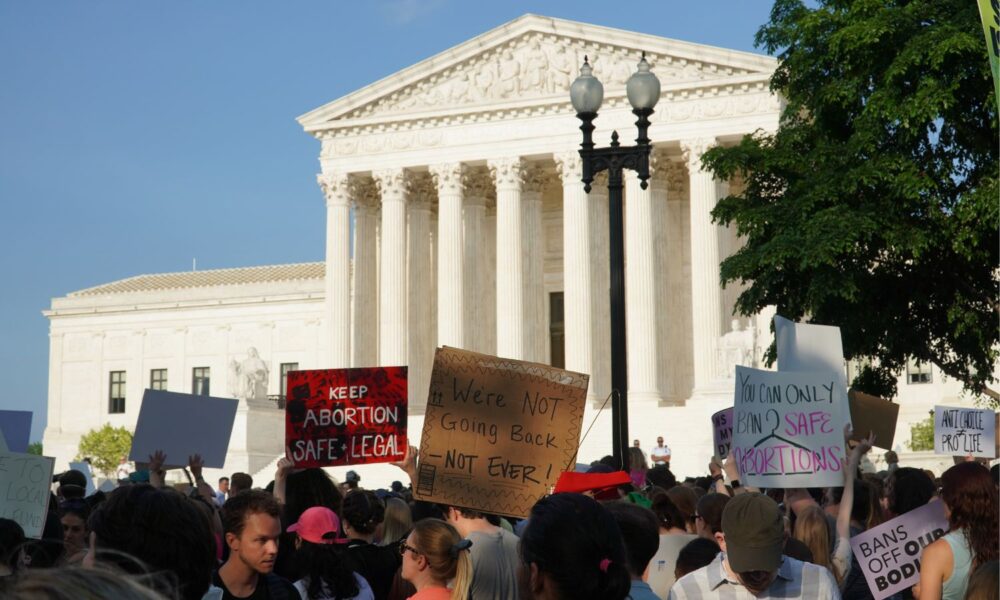In the aftermath of the decision on Dobbs v. Jackson Women’s Health Organization, we are seeing chaos reign across the country as women and other pregnant people are unfairly and unjustly being restricted or banned from obtaining needed abortion services in 16 states (this number could rise to 26 states). The Supreme Court’s partisan decision–with its utter disregard of scientific evidence and the disproportionate impacts on low-income people and people of color–means that millions of people across the country will no longer have access to this essential form of healthcare.
The federal government has a crucial role to play in protecting access to abortion. President Biden’s recent executive order is an important start. It instructs agencies to take steps on a range of topics, from improving access to medication abortion to promoting access to legal representation for patients, providers, and third parties who are lawfully involved with abortion care. Additionally, Attorney General Merrick Garland and Department of Health and Human Services (HHS) Secretary Xavier Becerra have issued strong statements laying out the actions that their agencies can take to ensure access to abortion continues under circumstances where it remains legal.
There is a lack of details on how exactly the Biden administration will carry out the goals laid out in the executive order, and there are further actions that the administration should consider taking. However, one thing is clear. One of the most important actions that federal and state governments can take to protect the right to an abortion is to provide people, to the fullest extent of the law, with access to medication abortion.
The science is clear: medication abortion is safe and effective
A two-drug protocol is currently approved by the Food and Drug administration (FDA) for terminating pregnancies during the first 70 days (10 weeks) of a pregnancy. One of these drugs is called mifepristone (sold under the brand name Mifeprex), and it blocks progesterone, a hormone essential to the development of a pregnancy. The second drug, which is taken 24-48 hours later, is called misoprostol (sold under the brand name Cytotec), and it works to empty the uterus.
In 2020, the majority of abortions were medication, rather than procedural abortions. In the coming years, medication abortion is likely to account for an even greater share of abortions in states where restrictions make it hard to obtain care.
The science is very clear on this: these drugs are safe and they work well. Data indicate that the approved regimen of mifepristone and misoprostol administered at nine weeks of gestation or before successfully terminates the pregnancy 99.6 percent of the time, and has only a 0.4 percent risk of major complications. In comparison, giving birth in the US is associated with a nearly 13 percent risk of major complications, and for patients undergoing cesarean delivery at low-performing hospitals, the risk of major complications rises to 21 percent.
Forcing people to give birth is not only traumatic and burdensome, but it increases the risk that women and other pregnant people will suffer severe health outcomes. This is especially true for Black and Indigenous women, who are two to three times more likely to die from a pregnancy-related cause than white women.
FDA continues to approve these medications for a reason
Since 2000, the FDA has approved mifepristone for use in the termination of pregnancies. In 2016, the body of evidence from providers, who were using different dosages and timelines from what the agency originally approved, was so substantial that the agency modified the approved dosages and increased the window of eligibility from 49 days to 70 days of gestation.
The FDA has been challenged in recent years to remove restrictions limiting access to abortion medications, prompting the agency to carry out an extensive scientific review of its restrictions on the medications.
In December 2021, the FDA decided, based on the weight of the evidence, that the in-person requirement for mifepristone could be removed and the providers can now prescribe the drugs via telehealth. Abortion pills can now be distributed by mail-in states that do not restrict telehealth for medication abortion. However, the agency still kept in place a major restriction: that pharmacies that wish to distribute the pills must become certified to do so. This additional procedural hurdle will likely result in fewer pharmacies stocking the medication abortion regimen than would do so if this regimen were treated like any other drug.
Since 2000, the FDA has carried a number of in-depth and extensive scientific reviews on mifepristone and misoprostol for use in abortion. Each time, the agency has not only confirmed the safety and effectiveness of these medications but has found that the science indicates more access, not less. The FDA should continue to work to drop the remaining restrictions to the fullest extent possible based on the best available science. Decisionmakers who disagree with the FDA’s current position and work to remove access to these medications are not guided by the best available science.
Some states are undermining the FDA’s authority
Prior to the Dobbs decision, states did not outright ban access to medication abortion, but instead placed additional restrictions on the medications that went beyond the FDA’s approach. For instance, 19 states prohibited access to abortion medications through telehealth services, and required an in-person visit to obtain the medications.
One particularly nasty tactic that some states codified into law forces doctors to lie to their patients about medication abortion. Specifically, seven states–Arkansas, Idaho, Kentucky, Nebraska, Oklahoma, South Dakota, and Utah–passed laws that require doctors to mislead their patients by telling them that medication abortions can be reversed after mifepristone dosage (if the patient has not yet taken misoprostol) with a large dose of progesterone. These statements are not based on the kind of high-quality research and expert examination that should guide treatment decisions and discussions with patients.
State legislators appear to be gearing up to directly target access to abortion medication. Can states do this? Can states fully disregard the FDA’s scientific authority and make up their own rules on who gets access to these important treatments? At the moment, there is no clear legal precedent on this. Ongoing legal cases will likely clarify how closely state policy must align with FDA’s science-based decisions.
Banning abortion ignores science and is inhumane
The science is very clear that being denied access to abortion and being forced to give birth increases the risk of poor outcomes such as financial instability, missed educational and career opportunities, difficulty leaving an abusive partner, maternal mortality, and other severe health and wellness consequences. Furthermore, these public health consequences will disproportionately harm those who are most marginalized in our society, including people of color, low-income people, LGBTQ+ individuals, immigrants, people with disabilities, and people in rural communities.
My UCS colleagues and I have gone into further details on the enormous public health consequences of banning or restricting abortion. This includes discussions on how overturning Roe v Wade will harm reproductive health, the importance of abortion access for the health and safety of pregnant people and their families, how previous federal rulemaking forced doctors to lie to or mislead their low-income patients about abortion, how ideological policies that limit access to abortion are based primarily on misinformation, and how the scientific community needs to step up and declare that policies banning abortion are anti-science and deprive people of their basic human rights.
Several states are choosing to criminalize access to a safe, effective, and vitally important medical procedure and place a wide variety of people–such as medical professionals, people who have miscarriages, and anyone who helps a pregnant person obtain access to an abortion–in legal jeopardy. For those of you upset by the Supreme Court’s decision on Dobbs and who want to do something, consider donating to your local abortion fund; if you need assistance with access to abortion yourself, INeedAnA.com can provide information, and abortion funds can provide support. Additionally, consider financially supporting organizations that work towards reproductive justice. And if you want to know what rights are still protected federally and in your own state, the Center for Reproductive Rights is a great resource.
This is the time to mourn the loss of a fundamental right to bodily autonomy, and to grieve for the rights that we may lose on contraception, gay marriage, and the right to privacy in our relationships. But this is not the end. We at UCS will continue to fight against these types of anti-science forces, and work to ensure that our government leaders do all they can to protect people’s health using science-based decisionmaking.

